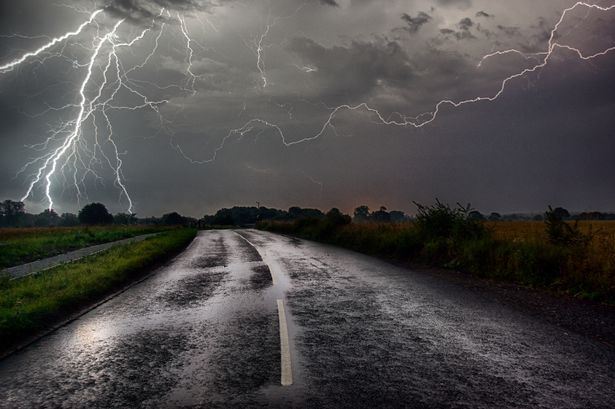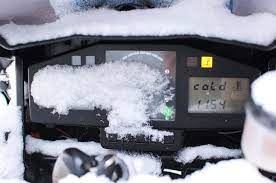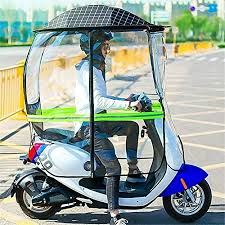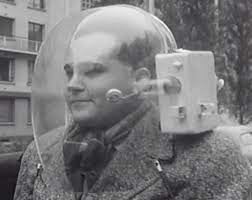Motorcycles and Bad weather - Looking After Yourself

MOTORCYCLES AND BAD WEATHER – LOOKING AFTER YOURSELF

Riding through winter, particularly in bad weather, is nothing to fear if you are properly prepared for it, and this is especially important for those who ride most days, and particularly when commuting alongside the madness of the rush hour and the school run.
There are many aspects to consider, one of which is staying warm and dry. The cold saps your concentration and inhibits your movement, particular in those parts that are of fundamental and utmost importance to the control of your motorcycle. And being wet on the inside is not only uncomfortable, but it makes you cold. And once it starts it only gets worse and spreads.
To stay warm and dry you need what is known as technical clothing, garments that are specifically designed for the purpose. There is a lot to choose from, and while you can be drawn into spending a lot of money on clever looking garments, it is not what they look like that is important, but what they are made of, and it is possible to keep yourself both warm and dry without spending very much. Once you have sorted the clothing there are various other accessories to use, either as part of your clothing or as additions to your motorcycle.
CLOTHING
STAYING WARM

To stay warm you rely first and foremost on your body to heat up the air between your skin and your layers of clothing. Next thing is to keep that warmth in and prevent the cold on the outside from affecting it. Bulky clothing in the form of thick woollens is a thing of the past and bulking out so everything is a tight fit is a no-no – it may feel snug initially, but it will not keep you warm and will inhibit movement and make you feel uncomfortable. To start with you need a thin base layer. These are available mostly in man-made materials, but you’re better off spending a little bit more and using a natural fibre such as Merino wool, it is better at keeping you warm, just as good at wicking away moisture, and copes with multiple wears without starting to smell! Next comes the mid-layer, and man-made fibres work well as they are not next to your skin and are excellent at retaining the warm air under them. Over that, if needed, a down-filled padded jacket or a fleece, which again must not be bulky, and on top of that goes your main jacket. Just add a neck tube to seal yourself up.
If you keep your core warm you stand a much better chance of keeping your hands and feet warm. If your core cools down your body regulates blood flow to your extremities to maintain core heat, and your hands and feet get cold. I am not a fan of bulky winter gloves because they reduce feel and the ability to work the controls. I prefer to keep my core warm and use a good quality pair of three-season gloves, then add a thin silk or Merino inner glove when needed.
STAYING DRY

To stay dry you need an outer layer that keeps the water out. Sounds a bit obvious, but the sad fact is that many garments tagged as being waterproof aren’t. The best form of waterproof keeps all the water on the outside, and to achieve this you either need the most expensive type, or the cheapest. The most expensive is Gore-Tex laminate, and it works, with the added benefit of breathability. The waterproof lining is laminated to the inner side of the outer layer so the water is kept on the outside, so the jacket itself does not get soaked through, does not get heavy, and dries quickly. Jackets with removeable waterproof inner layers allow the water to penetrate through the outer layer and they wet out, become heavy, reduce insulation, and take ages to dry. The cheap alternative, which also works, is the waterproof oversuit. They don’t look great and flap about in the wind, but for the price they are a no-brainer. The downside is that, unless you wear it all the time, you need to stop to put it on when it rains – a word of advice here, buy a suit that has enough diameter in the leg bottoms to fit over your boots. The last thing you want to do is take your boots off the get the suit on, as inevitably you end up with wet socks, which is annoying, especially if you have spent good money on waterproof boots.
However good your exterior clothing there is usually one area that water will find its way in, and this will often be around your neck. To prevent this a waterproof neck tube is ideal, and you want this to fit up against the underside of your helmet and go over your outer jacket, like a bib. Then any water that runs down the tube is directed over the jacket, not inside it.
OTHER STUFF

Irrespective of the clothing you use, keeping the wind and the rain off you in the first place helps to keep you warm and dry, and while it is impossible to prevent them having some effects there are many ways of keeping the worst of it at bay without having to resort to a car.
Fitting a screen, or a larger one than you already have, is a great way protecting the all-important core temperature. Touring and adventure bikes are catered for to some extent by the manufacture, naked bikes aren’t. Fortunately there are many aftermarket screens available that are easy to fit, will protect you well, and can be easily removed for the summer. The screens fitted to many bikes as OEM equipment often lack the size to keep the worst of the weather off you, but the addition of extra side and top extenders help, and often you can simply remove the OEM screen and fit a larger aftermarket one designed to fit directly onto the OEM bracket.
To prevent the cold and wet getting to your hands you can fit handguards, which deflect the nasty stuff but do still leave you exposed. Handlebar muffs exclude everything but don’t look great, if that matters. A good way to keep your hands warm is to use heated grips. These are now commonly fitted as OEM equipment to a wide variety of bikes. If they aren’t OEM or optional add-ons, there are many aftermarket options that work very well and are not difficult to fit, and are worth every penny.
On the subject of electrically heated stuff it is worth noting that there are now many heated garments, including socks and gloves, some of which involve plugging yourself into the bike’s wiring and battery, others which come with their own rechargeable cells. I wonder how long it will be before we get heated helmets. You can get air-conditioned ones, and heated visors.

An attempt at a heated helmet from the fifties
– it uses alcohol and a naked flame. Bit of a worry.
